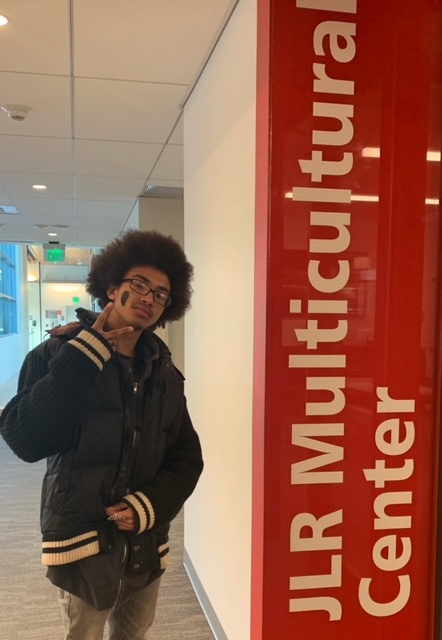Our society is having new conversations about sexual consent and sexual assault.
What is consent? What is it that makes consent confusing? When can someone legally consent or not? When is it rape?
“Don’t Be That Guy” is a poster campaign featuring slogans on rape and consent that was rolled out in Edmonton, Canada, in November 2010.It was launched by anti-rape and health groups in Edmonton that collectively called their partnership Sexual Assault Voices of Edmonton, or SAVE. Edmonton’s campaign was unusual in that it targeted men, not women.
One poster portrays a woman unconscious on a couch and reads, “Just because she isn’t saying ‘no’ … doesn’t mean she’s saying ‘yes.’”Another poster pictures two men sitting side by side on what appears to be a bed. One man is physically advancing, and the other is pushing him away. The caption reads, “It’s not sex … when he changes his mind.” The subtitle is, “Sex without ongoing consent = sexual assault.”
Many people get sexual consent throughout their lives without ever committing rape. Many people prefer a partner who is enthusiastic, and they would be horrified to force themselves on someone who did not want to have sex with them.
Consent for sexual activity is ongoing.
Getting consent from a partner for one activity does not mean consent has been given for any other activity. Getting consent for sex once from a person is not consent for more sex with that person. Getting consent to have sex with someone isn’t the same as getting consent for them to have sex with a few friends too.
This doesn’t mean people have to get signed consent forms before having sex. It simply means that someone who would like to have sex with another person should show that person the most basic respect of making sure that whatever they do is OK.
“Consent is a gray area. It’s so confusing.” This can be said when someone who wants sex suspects the answer might be “no.”
She didn’t say “no.” Consent, however, means saying “yes.” There is no law requiring a person to forcefully say “no” in violation of normal, typical social manners, in which people are indirect and polite about refusing someone. Refusing to say “no” bluntly, instead of politely, is not a crime. Rape, on the other hand, is a crime.
Two large-sample surveys have shed light on this issue. The first is “Repeat Rape and Multiple Offending Among Undetected Rapists,” by David Lisak and Paul M. Miller, published in Violence and Victims in 2002. The second is “Reports of Rape Perpetration by Newly Enlisted Male Navy Personnel,” by Stephanie McWhorter et al, also published in Violence and Victims, in 2009.
These studies provide solid data on rapists that have not been caught or incarcerated. Lisak and Miller sampled an ethnically diverse group of 1,882 college students with a median age of 26.5, a little older than the average college student.
Here are the four questions they asked the students, as reported on the anti-rape blog YesMeansYes.org:
1. Have you ever been in a situation where you tried, but for various reasons did not succeed, in having sexual intercourse with an adult by using or threatening to use physical force (twisting their arm, holding them down, etc.) if they did not cooperate?
2. Have you ever had sexual intercourse with someone, even though they did not want to, because they were too intoxicated (on alcohol or drugs) to resist your sexual advances (e.g., removing their clothes)?
3. Have you ever had sexual intercourse with an adult when they didn’t want to because you used or threatened to use physical force (twisting their arm, holding them down, etc.) if they didn’t cooperate?
4. Have you ever had oral sex with an adult when they didn’t want to because you used or threatened to use physical force (twisting their arm, holding them down, etc.) if they didn’t cooperate?
According to chapter 9A.44 Revised Code of Washington state law, all four of these legally constitute rape or attempted rape.
One hundred and twenty men from the study admitted to one or more rapes or attempted rapes, which is just over 6 percent of the total study population. Of the 120 who admitted to rape or attempted rape, 44 reported only a single assault. The other 76 were repeat offenders.
This is where the gray area of “rape by misunderstanding” begins to break down. These 76 repeat offenders, 63 percent of the admitted rapists, committed 439 rapes or attempted rapes, averaging 5.8 per person. The median was three, meaning there were some hardcore repeat offenders in this group.
This bears repeating: Just 4 percent of all the men surveyed, the 76 men who admitted to more than one attack, committed over 400 rapes and attempted rapes. It’s ridiculously unlikely that they collectively had over 400 misunderstandings. According to the study, these are people who deliberately manipulate situations and people in order to rape.
This type of rapist represents a very small percentage of men. This small percentage of men uses excuses of misunderstanding and miscommunication specifically to cover up rape, which is one of the major reasons why no one else should use those excuses.
If we set a standard of “yes” and hold rapists responsible for rape rather than blaming women for failing to say “no” rudely, we stop providing cultural cover for this type of serial rapist.
The McWhorter study supported and nearly replicated these results. McWhorter utilized a Sexual Experiences Survey tool that has been in use for more than 20 y ears to study 1,146 young male participants, of whom 144, or 13 percent, admitted to rape or attempted rape.
Similar to Lisak’s 63 percent of repeat rapists averaging 5.8 attacks each, McWhorter’s sample turned up 71 percent repeat offenders averaging 6.36 assaults each. In McWhorter’s study, the 144 rapists admitted to a total of 865 rapes or attempted rapes. Ninety-five percent of these attacks were committed by just 8.4 percent of the men in the survey.
According to the YesMeansYes.org blog post on this study, “The sometimes-floated notion that acquaintance rape is simply a mistake about consent, is wrong. … The vast majority of the offenses are being committed by a relatively small group of men, somewhere between 4 percent and 8 percent of the population, who do it again and again and again. That just doesn’t square with the notion of innocent mistake.”
We understand less and have less data about how and why women rape men. Although it happens far less often, it is no less damaging.
One thing may seem obvious, but it is worth repeating: Most men and women do not rape. Millions of men and women get consent for sexual activities every day without becoming confused and without interpreting interpersonal signals opportunistically. Most people negotiate consent just fine.















Zog door (@zealot7531_iron) • Jun 6, 2013 at 11:11 am
Actually, no, consent does not mean “saying yes.” It’s much more complicated than that.
Consent, literally speaking, means to willingly accept the actions of another person. It’s a state of mind, and can be shown in a number of different ways. Washington state law states that consent can be shown through “words or conduct.”
Lisak’s study only detects deliberate rapists. In order to answer yes to any of lisak’s questions, one must be aware that a behavior is unwanted. All the questions assume the respondent knew that his partner was unwilling.
If a respondent were genuinely unaware of his partners reluctance, he would not answer yes to any of those questions.
Zog door (@zealot7531_iron) • Jun 6, 2013 at 11:02 am
Don’t be an ignorant fanatic. Does every single kiss on the cheek require a verbal yes, even in a long term relationship?
It’s just litigious paranoia.